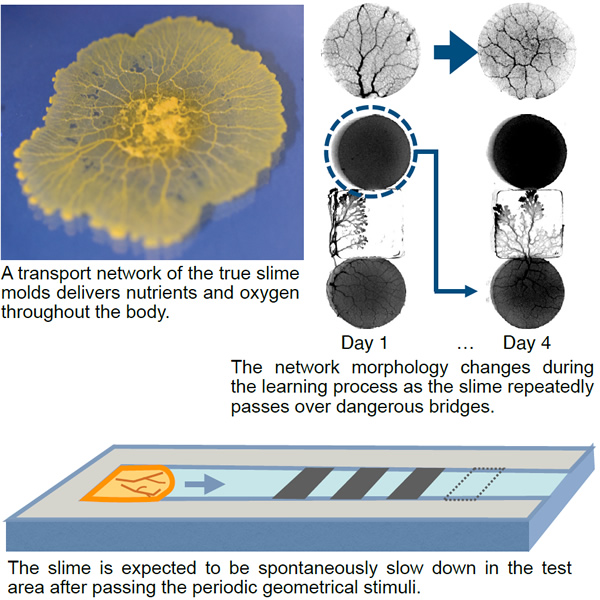Grant-in-Aid for Transformative Research Areas (A)
Publicly Offered Research:2022FY
Exploration of learning format in diorama environments using a transportation network of slime mold
- Principal
investigator - Atsuko TakamatsuFaculty of Science and Engineering, Waseda University
Plasmodium of the true slime mold is a large, amoeba-like, unicellular organism. Despite its simple structure, it is capable of solving mazes, learning through habituation and associative memory, and other primitive but "intelligent" phenomena have been discovered one after another. Due to the large size of the cell, it has developed a network of tubes that transport protoplasm throughout the cell body, instead of developing the brain and nervous system. In this study, we aim to extract the essence of how advanced functions such as memory and learning can be realized from a system composed of simple components like slime molds. Here, we suppose that the essence of the mechanism of learning in slime molds lies in the transportation tubular network structure. First, the memory and spatial learning of slime molds will be demonstrated through behavioral observation in a diorama environment, such as the dangerous bridge passage experiment and the spatial periodic stimulation experiment. The changes in the structure of the transportation network that slime molds acquire during the learning process, will be observed and quantitatively analyzed, then the mechanism of learning in the slime mold will be explored.

 Ethological dynamics in diorama environments
Ethological dynamics in diorama environments